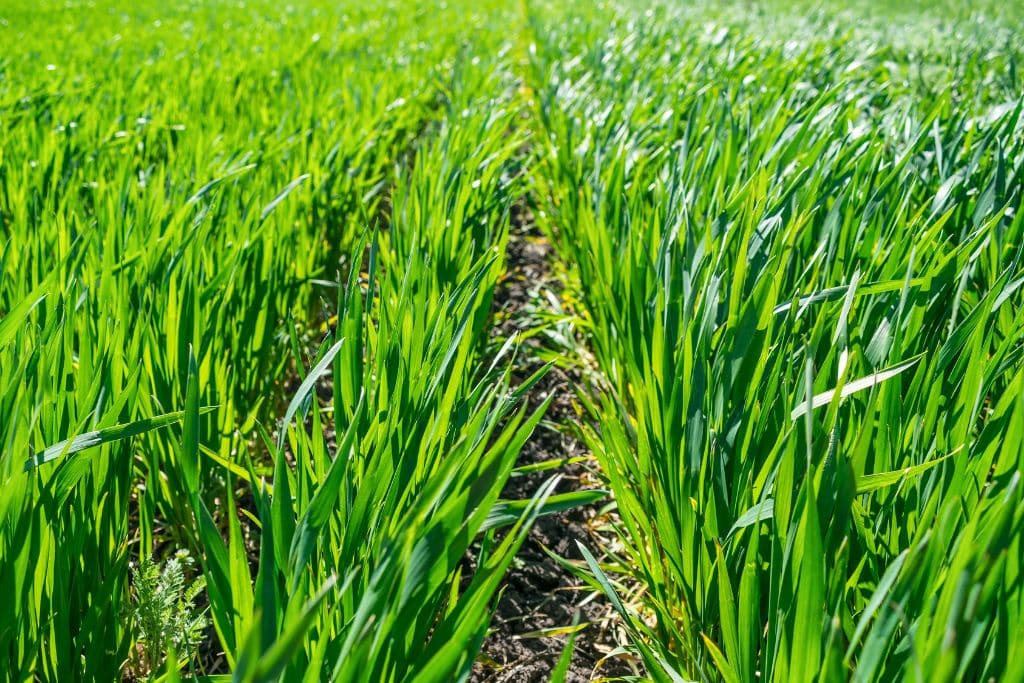Soil represents a priceless foundation for all life on Earth. Fertile soils are a source of nutrients for plants and crops that are crucial to feeding people across the world. But the dirt under our feet often goes unnoticed and many still cannot fully see its real value. Globally, almost 2,000 million hectares of soil have been degraded by human activities. By practicing regenerative agriculture, farmers are now trying to reverse the already declining trajectory of soil health in a bid to avoid food insecurity globally. Here’s why we should step away from traditional agriculture and start investing more in this practice.
—
Why Is Soil so Important?
According to Professor Bridget Emmett of the UK Centre for Ecology and Hydrology, soil is “one of the most underrated and little understood wonders on our fragile planet.”
Soil is a free surface material that consists of various organic and inorganic particles. The combination of different physical and chemical properties of soil determines the soil type and each soil type determines an agricultural production potential. Soils represent a non-renewable resource on which human life depends. It takes hundreds of years to generate one centimetre of new soil but it can take just one year or even less to destroy it.
Soil represents a vital source of nourishment and medicine, it is home to millions of living species, and it is also a great carbon sink, as it can absorb and store carbon. For these reasons, it is considered one of the most important and valuable natural resources on Earth.
Despite seeing it everywhere around us, the amount of arable soil is in sharp decline. The Food and Agriculture Organization (FAO) estimates that 30% of the soil in the world has been degraded due to climate change, pollution as well as poor soil management and usage, typically for agricultural, urban, or industrial purposes. FAO also estimates that over 90% could become degraded by 2050 if no action is undertaken soon.
The Dangers of Unhealthy Soils
Healthy soils are crucial as they provide several benefits, including feeding the world population, filtering rainwater, and cycling nutrients. Unfortunately, the need to fulfil the challenges relating to food security often leads us to adopt agricultural practices that do not take into account the multi-functionality of soils, thus leading to degradation. Unhealthy soils inevitably reduce their potential, leading to crop failures.
To achieve stability in the food supply, healthy soils are a must. Indeed, approximately 95% of per capita caloric consumption worldwide comes from food that either directly or indirectly depends on the soil. This is a clear sign of the crucial yet fragile relationship between nature and human existence. Healthy soils determine physical and economic access to sufficient, safe, and nutritious food to meet people’s dietary needs and food preferences for an active and healthy life.
Nowadays, over 50% of agricultural land has been degraded. Food shortage inevitably leads to gradual growth in food prices. These are estimated to increase by 30% by 2035. With many regions of the world already struggling to get enough nutritious food, a reduction in land productivity coupled with increasing prices could have catastrophic consequences.
Agriculture plays a major role in soil depletion, especially when it comes to intensive farming techniques such as tilling, which negatively affects the surface runoff, causes erosion and biodiversity loss, and results in a decrease in the soil organic matter and overall soil fertility.
Using chemical or inorganic fertilisers is still extremely popular among farmers. However, these fertilisers have a devastating impact on the environment and especially the soil. Leaching and groundwater pollution are just two of the most common consequences of using chemical fertilisers. Aside from this, the accumulation of acids from chemical fertilisers – such as hydrochloric and sulphuric acids – can result in soil friability.
Another example of intensive farming practice is the cultivation of monocultures. This method of farming is more popular in industrialised regions and it involves the growing of a single crop on a large plot of land. However, planting a single crop robs the soil of its nutrients and contributes to a drastic decrease in its fertility by reducing varieties of bacteria and microorganisms that are crucial in maintaining the processes within the soil. The crops are also more prone to pests and diseases which require higher use of pesticides or herbicides to protect the crop.
With climate change showing its devastating effects now more than ever, many farmers around the world are starting to realise the importance of taking care of the soil, not just as a way to guarantee food security but first and foremost to keep their business going. Given that, according to the United Nations, the world will have an extra 2 billion people to feed by 2050, this problem needs to be addressed as soon as possible.
You might also like: Can Traditional Farming Withstand Another Summer of Record-Breaking Heatwaves?
Is Regenerative Agriculture the Solution We Need?
Nowadays, there is more and more acknowledgment about what is at stake, and the pressure among farmers to rethink their agricultural practices is increasing. Regenerative agriculture offers a great opportunity to help them maintain their business while improving soil health and working towards a more sustainable world.
The main idea behind regenerative agriculture is to mimic the natural processes in ecosystems and hence revive landscapes for generations to come. Despite an increasing interest in more sustainable techniques in the agricultural sector, there is still no legal or regulatory definition of the term ‘regenerative agriculture’. One of the most generally accepted definitions sees regenerative agriculture as “a system of farming principles and practices that increases biodiversity, enriches soils, improves watersheds, and enhances ecosystem services”. Regenerative agriculture represents a holistic approach to farming, designed to benefit the ecosystem.
Six practices fall into the category of regenerative agriculture:
1. Reduced or No-Tillage
Undisturbed soil provides a higher abundance and diversity in microbes that can in turn improve ecological benefits and also help crops become more resilient to environmental stress. Overall quality and quantity of crops are enhanced as well.
2. Cover Cropping
Covering crops and thus soil with plants can help increase soil quality and fertility, manage erosion, support water retention, and increase natural biological diversity. It also helps with weed, pests and diseases management.
3. Animal Integration
Raising crops and livestock together brings many benefits. It improves soil health, reduces fertilisers input and animal feed costs, reduces labour and machinery expenditure, and increases carbon sequestration.
4. Agroforestry
Agroforestry represents a land use management system where trees, shrubs, palms, and bamboos grow among or around the crops. Trees (shrubs and others) play a special role in bringing back nutrients to the soil, catching rainwater, and helping with water infiltration. They also provide a habitat for millions of living organisms.
You might also like: How Agroforestry Can Help Coffee Farms Become More Resilient to Climate Change
5. Compost and Manure
Compost and manure increase the organic matter in the soil, enhancing its texture and pH which directly affect its fertility. This way, the soil is able to retain more moisture, meaning that less irrigation is needed. Using compost or manure to fertilise soils also reduces the need for harmful and often costly and energy-intensive petrochemical pesticides and fertilisers.
6. Crop Rotation
When the crop rotation is done properly, it builds a great potential in reducing soil erosion, enhancing biological diversity, and boosting the actual soil quality and fertility. With the combination of some other practices, this can have a significant impact on carbon sequestration and overall reduction of the climate change consequences.
Future Outlook
Changing farmers’ strategy and their behaviour toward the environment will represent the biggest challenge in achieving the transition from conventional farming to regenerative. While agriculture provides a living to farmers, it is important that they understand the importance of shifting to more sustainable practices, not only to protect the environment and ensure food security for future generation but also to protect their own business in the years to come.
The agricultural sector has three main challenges to overcome in the coming years: Increasing the productivity of food, becoming more resilient, and reducing its environmental impact. Regenerative agriculture can significantly help overcome these challenges.
Regenerative agriculture’s main focus is to improve the biodiversity of the soil. Biologically diverse communities are generally more resilient during environmental stress periods such as in times of drought and heavy rains. Resilient soils and crops are crucial in today’s changing environment with the ever-increasing amount of weather shocks we keep experiencing.
While implementing such a transformation will have its very own challenges, it is the only solution we have to protect food security and the future of agriculture. However, farmers cannot do this alone. Governments need to step up their efforts by increasing investments and providing support through policies.
In a letter sent to the country’s governors in 1937, former US president Franklin D. Roosevelt said: ‘The nation that destroys its soil, destroys itself’.
You might also like: Why We Should Care About Global Food Security


















